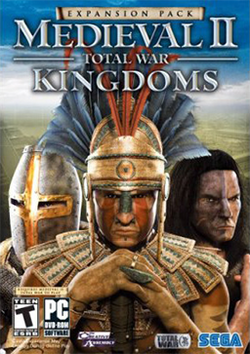Notable features
The campaign map features the presence of permanent stone forts placed in strategic locations, which can be garrisoned and provide free upkeep for a small number of units. These structures can hold out for a brief time against sieges and are automatically repaired after each battle.
Certain units can only be trained if that faction's culture is high enough in a settlement, making expansion into conquered land more difficult. As all factions are Catholic, culture has replaced religion in the campaign and priest units are unavailable.
A special, unplayable faction—the Barons' Alliance—is similar in gameplay terms to the Eastern and Western Roman Rebels from Rome: Total War: Barbarian Invasion . When characters, armies and settlements under English control rebel, they will become part of the Baron's Alliance, a faction with essentially the same strengths and weaknesses of the English faction, including the ability to utilise diplomacy and agents to achieve their goals.
Every faction gets paid an additional amount of florins every turn. This payment is referred to as "the King's Purse". In Medieval II: Total War, some factions had a high king's purse payment and some had a low payment. Rather than having a fixed king's purse, each faction in the Britannia Campaign has a dynamic king's purse—the sum of money a faction is paid every turn can change.
A number of special historical figures, including King Edward I, William Wallace, Prince Llywelyn ap Gruffudd, High King Brian O'Neill and King Haakon IV of Norway, appear either at the start of the campaign or at some later point. Though they lack the special abilities of the hero characters from the Crusades campaign, they usually possesses unique traits and are accompanied by a large army.
If any of the starting Welsh settlements are captured by the English, Welsh insurgents rise up in an attempt to recapture the settlements. The quality of the units in the rebel army will depend on which settlement is captured—for example, the rebel army will be very strong if the starting Welsh capital—Caernarvon—is captured, and it is a weaker army if smaller Welsh settlements, such as Pembroke, are conquered. A notable historical inaccuracy in this respect is that Caernarvon, the Welsh capital, did not have a castle until 1283, despite the campaign beginning in 1258, and was no more than a minor town at the time. The actual capital of Wales in the period, Abergwyngregyn, is not represented in the game.
